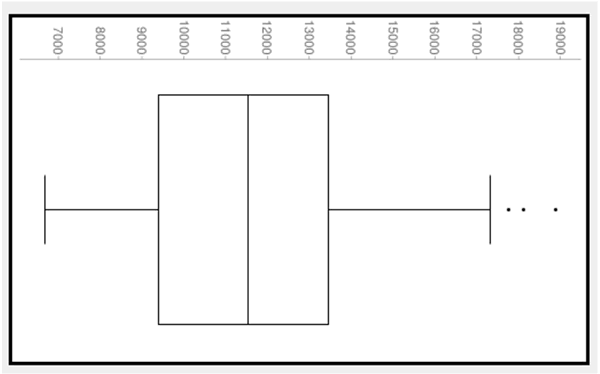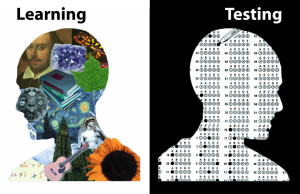As a teacher, I usually favor spending money on public schools. Our teachers union voted to walk out this coming Tuesday afternoon to ask for more money for our kids. After the vote, however, I wondered how bad our situation really was. Compared to other states around the country, do we really have a school funding problem? I found some numbers and after a bit of analysis decided to pose the same question to my sixth graders.
One up-to-date and reliable data set that I thought would matter and be accessible to middle school students was per pupil expenditures by state. I found it at the Kids Count Data Center. It made sense to use these numbers because a data set of fifty is manageable and the sixth grade learning sequence demands understanding of distributions, box plots and quartiles. The class was in its third day of a statistics unit.

I proposed to the class that they would be using statistics to decide for themselves whether or not they agreed that their teachers should walk out to demand more money for schools. I passed out forty-nine numbers on index cards: one number for each state. I held our state of Washington face down in my hand. I told them that they were holding one, two or three states in their hands and that the numbers were in thousands. I didn’t write the names of the states on the cards so that the curious could ask about the states they held. One lay way outside the bulk of the numbers, drawing envy and attention to the state of Vermont which spends close to $19,000 per year per student. The class quickly determined that Utah had the lowest spending at a little under $7,000 per year per student.
I showed the five number summary I had calculated in advance:
- Minimum: 7
- Maximum: 19
- Median (or middle:) 10.5
- 1st Quartile (middle of the bottom half:) 9
- 3rd Quartile (middle of the top half:) 13.5
I stood in the middle of a line on the floor and proclaimed myself the median (the middle number when numbers are arranged in order,) and asked everyone who had a card below the median (in the bottom half) to place it on the floor. Then those between the median (middle) and third quartile (the top fourth) of the states came forward to place their cards. Finally, I stood at the third quartile and asked the big spenders (the top fourth of the states) to come forward.
Then I stepped out of the line and asked if anyone had any questions. Hands shot up as several students blurted, “Where is Washington?” I said, “I am still holding that card. Where do you think we belong in this distribution?” A few pointed to the minimum, assuming that we keep company with Utah, but most pointed to near the middle of the line.
I stepped forward with my card with the nine on it and stood at the first quartile which marks the top of the bottom fourth of state spending. I asked students what that meant. They replied with dismay, “Three-fourths of the states spend more on kids than we do.” Then I stepped out of the line again and took my place just eight states from the bottom. I said, “Yes you are right, and with a total of about six states spending around $9,000 per student, we are about eight states from the bottom. Do we have a problem? Talk to your partner about whether we have a problem.”
I didn’t ask students to write down their replies because I want them to be free to decide for themselves if Washington State has a school funding problem. I decided that asking them to share would put them too much on the spot. The pressure of writing something down didn’t feel right: It is my job to provide information, not to persuade.
When they shared out, most agreed that we have a problem. One pair dissented and wisely said, “We think we need more information. It depends what they spend the money on, like tests or teachers or field trips or sports.” I told them that another data set I could have brought was teacher salaries. “I am fine,” I said, “but a beginning teacher makes the same hourly wage as my eighteen year old son does building trails in the state forest.” Another student made the argument that his grandma was a teacher and things must be fine because she has good retirement, but then he caught himself, “Wait, she lives in Vermont.”
I agree with the pair of student skeptics. We do need more information. How districts spend the money does matter. But without the money to spend, those closest to the students — the principals and the teachers — won’t even have the option to choose to spend wisely. I don’t plan on moving to Vermont, but I do know my talented student teacher is leaving the state for Oregon, where spending is near the median.
I don’t know how many families will join us on Tuesday, but the parent volunteer in the room was swayed by the data to reach out via email to the families of my class. For those willing, let’s meet at Percival Landing at noon, Tuesday, May 26, all dressed in red and walk to the Capital Building for our kids!

